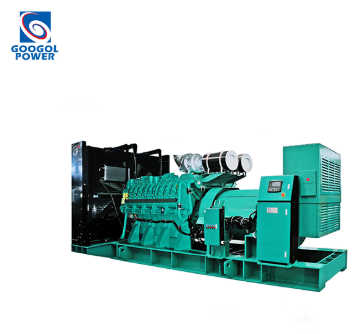- HOME
- ABOUT GOOGOL
- PRODUCTS
DIESEL ENGINE
GENERATOR SETS
- DOWNLOAD
- CASES
- NEWS
- CONTACT US
DIESEL ENGINE
GENERATOR SETS

In electronic fuel injection diesel engines, the electronic control unit (ECU) plays a crucial role as the engine's "brain", accurately calculating the fuel injection advance angle based on engine operating conditions to ensure efficient and stable engine operation.
The engine operating conditions are complex and varied, and the ECU first needs to obtain multiple key parameters to determine the operating conditions. These parameters include engine speed, load, coolant temperature, intake temperature, and pressure. The engine speed is accurately measured by the crankshaft position sensor, and the speed signal can directly reflect the speed of the engine operation. The load can be indirectly calculated through information such as throttle opening and intake flow rate.

Based on these parameters, the ECU starts calculating the fuel injection advance angle. Under idle conditions, the engine load is low, requiring less fuel and a relatively small injection advance angle to maintain stable idle operation while avoiding engine shaking or abnormal combustion caused by premature injection.
When the engine is at medium low load and medium speed, the fuel injection advance angle will be adjusted appropriately according to changes in engine speed and load. As the load increases, in order to fully burn the fuel and release more energy to drive the piston to do work, the injection advance angle needs to be moderately increased, so that the fuel can be injected into the cylinder earlier before the piston reaches the top dead center, giving more time to mix with air and complete combustion.
Under high load and high-speed conditions, the control of fuel injection advance angle is more critical. At this time, the engine requires a large amount of fuel to output strong power, but if the fuel injection advance angle is too large, it may cause detonation and damage the engine; If the fuel injection advance angle is too small, it will lead to insufficient combustion, reducing power output and fuel economy. The ECU will integrate various sensor data and calculate the precise fuel injection advance angle through complex algorithms, so that fuel can be injected into the cylinder at the appropriate time, ensuring that the engine can output sufficient power under high load while maintaining good fuel economy and emission performance.
In addition, parameters such as coolant temperature, intake temperature, and pressure can also affect the fuel injection advance angle. At low temperatures, the rate of fuel evaporation and mixture formation is slow, and it is necessary to increase the injection advance angle appropriately; At high temperatures, the opposite is true. High intake pressure means that there is sufficient air in the cylinder, and the injection advance angle can be appropriately increased to fully utilize the air; When the intake pressure is low, the fuel injection advance angle needs to be reduced.
ECU calculates the optimal fuel injection advance angle based on different engine operating conditions through real-time collection and analysis of various sensor data, using complex and accurate algorithms, thereby ensuring that electronic fuel injection diesel engines can maintain good performance under various working conditions.